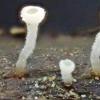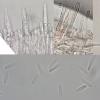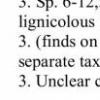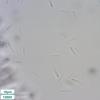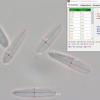
17-01-2026 19:35
Arnold BüschlenHallo, ich suche zu Cosmospora aurantiicola Lite

15-01-2026 15:55
 Lothar Krieglsteiner
Lothar Krieglsteiner
this one is especially interesting for me because

16-01-2026 00:45
Ethan CrensonHi all, On decorticated hardwood from a New York

18-01-2026 12:24
Hello.An anamorph located on the surface of a thin

08-12-2025 17:37
 Lothar Krieglsteiner
Lothar Krieglsteiner
20.6.25, on branch of Abies infected and thickened

10-01-2026 20:00
Tom SchrierHi all,We found picnidia on Protoparmeliopsis mur

13-01-2026 07:28
 Danny Newman
Danny Newman
Chlorociboria glauca on indet. decorticate logThe
(6.7) 8.2 - 10.4 (11.4) × (2.0) 2.05 - 2.6 (2.8) µm
Q = (3.2) 3.6 - 4.5 (4.7) ; N = 37
Me = 9.2 × 2.3 µm ; Qe = 4.0
The paraphyses are 50-65 x 4.7-6, with one or two bigger and some smaller droplets, protruding some 15-25 µm.
With these features I end up in subkey 4 of Zotto's key and there step 3 with three lignicolous species and an "unclear collection from Filipendula". This one was most probably growing on Filipendula ulmaria on a wet and swampy lake shore.
I compared to an L. pudibundum i found some weeks ago (on Prunus padus) and the main difference seems to be that the hairs are not capitate (with the exception of one hair) and the paraphyses are marginally more protruding. Is a host switch to Filipendula possible for L. pudibundum?





